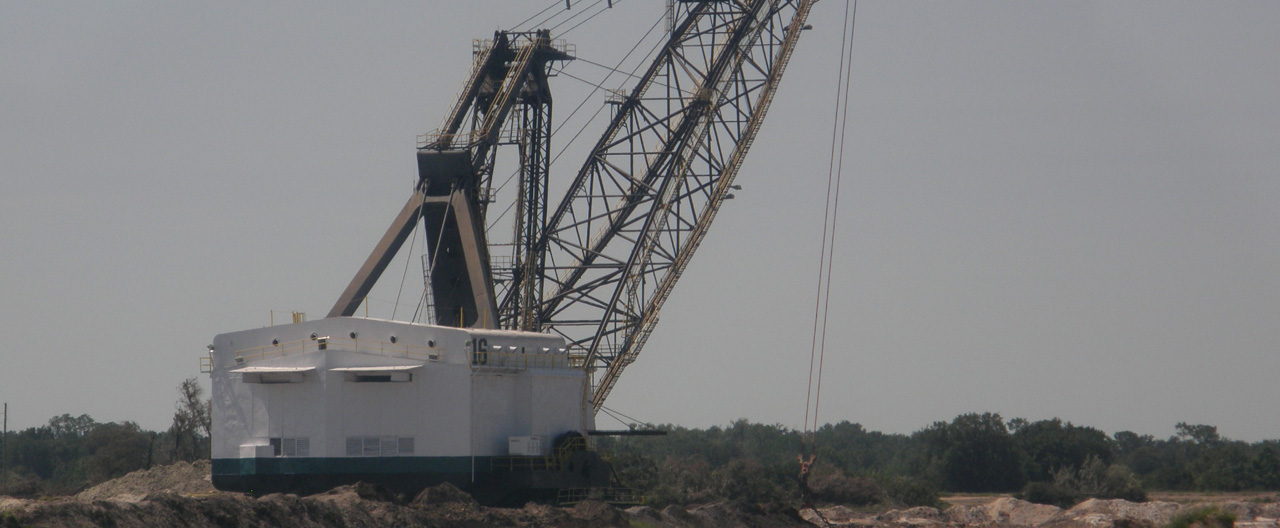Florida Phosphate Mining History
Florida phosphate mining dates back to the first hard rock deposits found near Hawthorne in Alachua County in 1883. Endurance was imperative in the early years when phosphate mining was done with wheelbarrows, picks and shovels. Next came mule-drawn scrapers. Mechanized excavation began between 1900 and 1905 with steam shovels. Early steam shovels held only one cubic yard of earth, but one steam shovel operated by three men did the work 80 men did by hand.
Steam dredges and barges came into use in hard rock areas where the water level was too high for picks and shovels. Centrifugal pumps mounted on barges were also used to mine the river-pebble phosphate deposits in the Peace River until river-pebble mining ended in 1908.
Draglines, the current mining tool, came into use with the dawn of electricity and diesel power in the 1920s and 1930s. By 1930 these electrically driven draglines were adopted as the most economical way to mine land pebble. They also were put to use in the hard rock region.
The dragline significantly changed the mining operation. In 1900 it took a year to mine a 15-acre mine site with picks and shovels. Today one dragline mines 15 acres in a month.
Digging the phosphate out of the ground is only one step of the mining process. Phosphate comes out of the ground as part of a matrix, which is a mix of the phosphate, sand and clay. The phosphate must be separated from the sand and clay it has melded with in the ground over millions of years. Early separation methods included crushing, washing, screening and, in the case of hard rock, picking out silica by hand on a conveyor belt.
Separation advancements in the 1920s and 1930s allowed companies to begin salvaging phosphate particles they had been discarding as waste. Improvements were made in preparing matrix for washing and screening, finer screens were used, and equipment capacity increased. The most important change, however, was the 1927 development of flotation, which separates phosphate rock from sand based on their difference in hydrophobicity (water aversiveness).
Since 1942, most mining advancements have been in refining the dragline mining and flotation processes. Technology advances continue to make it possible for phosphate companies to mine and use lower quality rock. A research focus today (2005) is finding a feasible and economically attractive method for separating dolomite from the ore being mined. Much of today’s reserves are left in the ground because the dolomite, which contains magnesium, causes problems at the fertilizer processing plant.
